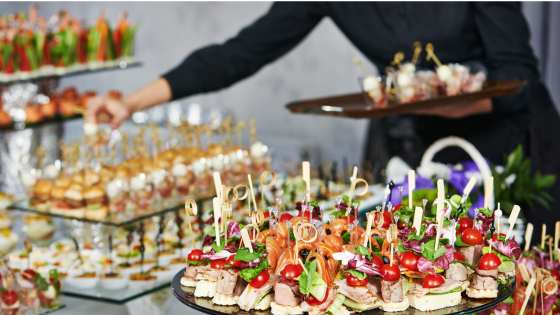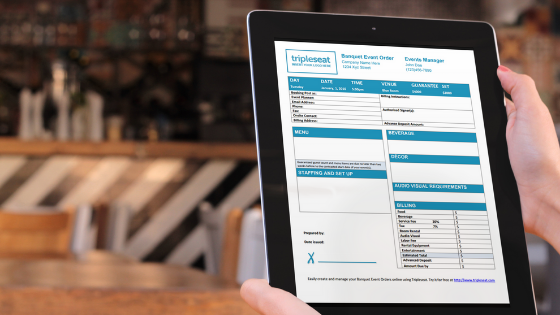BEO Best Practices: The Real Deal on Banquet Event Orders

Whatever type of venue you manage, event planning can be like herding cats while juggling flaming torches, right? BEO best practices can help with the many details and logistics of each unique event. They’re your go-to guide for not losing your mind over the nitty-gritty of each event. Running a restaurant, hotel, or unique venue? Doesn’t matter. A BEO is your best pal, keeping track of everything from what’s on the menu to who’s handling the AV nightmare.
Now, some of you might think BEOs are the dry side of event planning. But, surprise! They’re actually the secret weapon in your event management arsenal. This article isn’t just a snooze-fest about BEOs; it’s your golden ticket to pulling off events that are less ‘meh’ and more ‘wow’! We’re about to make event planning a little less hair-pulling and a lot more high-fiving. Let’s do it!
What Does BEO Mean?
A BEO stands for Banquet Event Order. Simply put, it’s a document that shares all the details and requirements for an event. Most likely, the event manager at the venue creates the BEO and serves as a guide for all parties involved in the event, including the client, vendors, and staff. Whether you are brand new to events or have been managing them forever, know that a BEO is crucial. Without a BEO, you’re just throwing a bunch of stuff together and hoping it sticks. Spoiler alert: it won’t.
Who is Responsible for Creating a BEO?
The responsibility for creating a BEO typically falls on you! – the event planner or manager at the venue. However, your client or event planner needs to communicate what they expect and any special requests or love notes they want to send to you. Everything should be on the B-E-O!
Why is a BEO So Important for Event Planning?
BEOs are crucial to make sure everything runs smoothly. Without them, you’re basically winging it, and let’s face it, nobody wants to attend a wing-it kind of event. They provide a clear and concise overview of the event details, making it easier for everyone involved to understand what they need to do. BEOs also serve as a reference point for the event planner and venue staff, so that all the necessary arrangements are in place and less errors are made.

What are the Categories of Information Included on a Typical BEO?
Event Details
The first section of a BEO includes basic event information such as the date, time, and location. This section also includes the name and contact information of the client or event planner. Included are also things like guest count, event space, and menu style.
Event Agenda or Timeline
The event agenda or timeline outlines the schedule for the event, including arrival times, meal service, and any other activities or presentations. This section is crucial for keeping the train on its tracks and ensuring that all parties involved are aware of the schedule.
Room Setup and Layout
The room setup and layout section of a BEO details how the event space will be arranged. This includes the number and arrangement of tables, chairs, and any other furniture or decor. It also specifies the location of any AV equipment, such as projectors or screens. You don’t want to be sweating it during the event and moving stuff around last minute.
Menu and Beverage Selections
One of the most important aspects of any event is the food and beverage selection. The BEO includes a detailed menu breakdown, including any dietary restrictions or special requests. It also outlines the beverage options and any additional charges for alcohol.
Audio-Visual Equipment Needs
In today’s digital age, audio-visual equipment is a crucial component of any event. While AV is known to cause event trouble, rest assured the BEO specifies the type and quantity of equipment needed, such as microphones, speakers, and projectors. It also includes any additional charges for AV equipment rental.
Staffing Requirements
The staffing requirements section of a BEO outlines the number and type of staff needed for the event. This includes servers, bartenders, and any other event staff. It also specifies the number of hours each staff member is needed and any additional charges for overtime.
Special Requests or Notes
Next, the BEO includes a section for any special requests or notes. This can include anything including dietary restrictions, specific room setup preference, and vendor information, or food and beverage requirements. It’s important to communicate any special requests or notes so that both the event planner and your team at your venue have these details.
Billing Estimates
The final part of the BEO can outline your venue’s charges including items such as Room Charges, F&B Minimums, Gratuity, and Deposit information.
BEO Best Practices
1. The Appetizer: Understanding Your BEO
Before we get to the main course, let’s start on what a BEO really is. Think of a BEO as your event’s blueprint – it outlines the who, what, where, when, and how of your event. Remember, a well-crafted BEO can prevent your event from turning into the Titanic – a ship everyone thought was unsinkable until, well, you know.
2. The Soup: Details, Details, Details
Your BEO should be concise but stir in the many details. Include everything from the timeline of events to the exact number of vegan, gluten-free, and nut-free appetizers. Ever had a guest who’s allergic to nuts but accidentally grabbed a peanut-butter sandwich because it wasn’t labeled? Yeah, let’s avoid that episode.
3. The Salad: Flexibility is Key
Keep your BEO flexible. Changes are as inevitable as that one guest who thinks they’re a DJ and keeps requesting songs. Be ready to pivot when last-minute changes come your way.
4. The Main Course: Communication is Your Secret Sauce
Serve up a generous helping of communication. Share your BEO with everyone involved – from the kitchen staff to the audio-visual team.
5. The Side Dish: Technology is Your Friend
Incorporate technology like it’s the hottest trend – cause it is. Use software, like Tripleseat, which lets you update your BEO in real time. It’s like having a magic wand that instantly informs everyone about the change from a quartet to a DJ because, well, the bride changed her mind again. Tripleseat, event management software, makes creating all documents so easy that you might enjoy this part of the event management process. With a few clicks of the mouse, you can build your own custom BEO template that reflects your venue’s unique style. And you can provide BEOs to your client and team via discussions and the portal, where they can view and comment on the BEO details. No more endless emails. You and your customers can make changes to documents seamlessly and communicate the changes in real time. Streamline your planning process with Tripleseat’s banquet event order form templates that can vastly improve the experience of creating BEOs and their overall appearance. Not using Tripleseat yet? Schedule a free demo online.
6. The Cheese Course: Attention to Small Details
Pay attention to the small details. Like fine cheese, they might seem insignificant, but they can make or break the experience. The placement of a projector or the temperature of the room can be the difference between a standing ovation and guests sneaking out the back door.
7. Dessert: The Final BEO Best Practice
Finally, don’t forget the dessert – a sweet follow-up after the event. Gather feedback, learn from the snafus, and celebrate the successes. Your next BEO will be even more impressive! Looking for a Free BEO Template?
If you are just getting started with events and want a peek at BEOs, we’ve provided a basic Banquet Event Order template. Download our free BEO template.
For Streamlined BEO Features and More, Check Out Tripleseat
Want an integrated BEO along with a sales and event management application? Tripleseat’s easy-to-use BEO features will streamline event planning and management. Not using Tripleseat yet? Schedule a free demo online.
